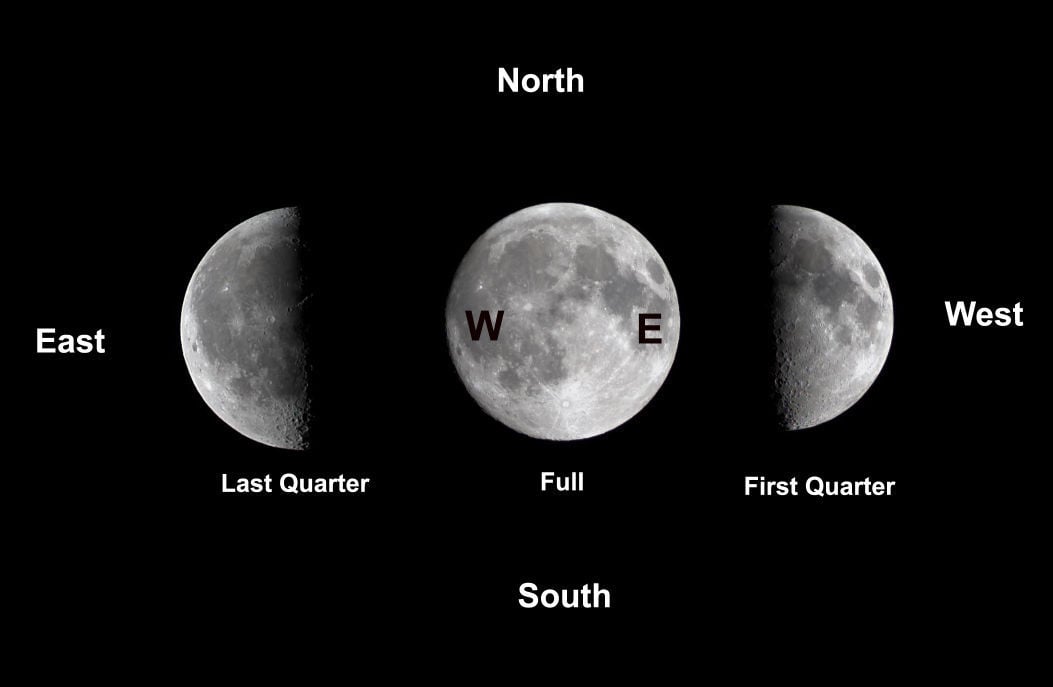The young moon (days one through three) is visible as a thin crescent in the western sky after sunset.
On Friday, April 8, at about 7 p.m., you can catch the nearly 2-day-old crescent moon in the western sky, 8 degrees from Mercury, which is to the north (right) of the moon and closer to the horizon.
First quarter is Wednesday, April 13. A first-quarter moon (day seven) rises at about noon and sets around midnight local time. It is nearly overhead at sunset.
The full moon (day 14) rises in the east at sunset and sets in the west at sunrise. A last quarter moon rises around midnight in the east and sets at about noon in the west.
The old moon (days 24-27) is visible as a thin crescent in the eastern sky just before sunrise. A complete lunar cycle from new moon to new moon is 29.5 days, a lunar month.
The picture shows the first-quarter moon, the full moon, and the last quarter moon as we look facing toward the moon with our directions on the Earth shown in white letters.
East and west on the moon are marked in black letters. North and south on the moon are the same direction as on the Earth. While the moon may annoy us sometimes by hiding fainter stars and constellations, it is simply marvelous on its own.





